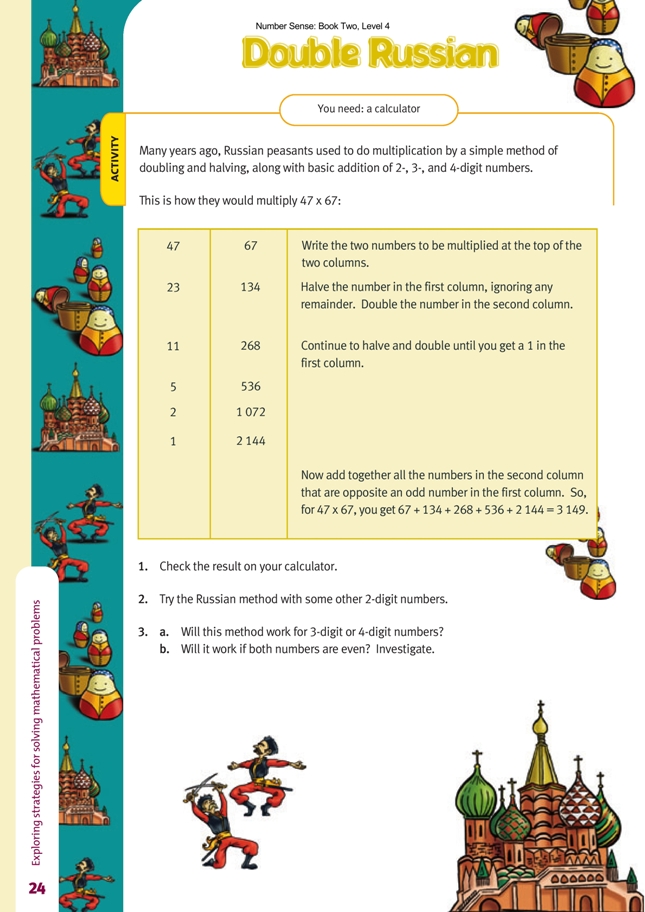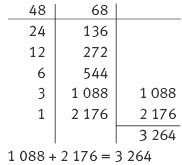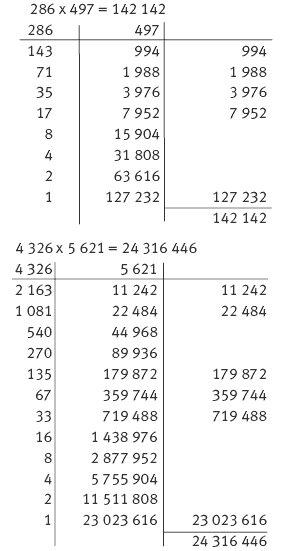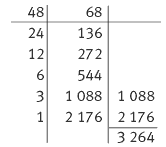This is a level 4 number activity from the Figure It Out series. It relates to Stage 7 of the Number Framework.
A PDF of the student activity is included.
Click on the image to enlarge it. Click again to close. Download PDF (642 KB)
use doubles and halves to solve multiplication problems
A calculator
This activity shows that, in the absence of a calculator, there is more than one way to calculate efficiently. When the students have completed the investigation, they will see that the method always works. While this does not explain why the method works, it may encourage the students to try other ways of working. For example, based on the idea of doubling, if the students wish to multiply a number by 32, they can simply
double the number five times. For example, if they choose 23, then 23 x 32 will give the sequence 46, 92, 184, 368, 736 (with 736 being the final product). This works because 32 is 25 or 2 x 2 x 2 x 2 x 2.
Another example of an efficient alternative method may be used in the calculation 50 x 684. Since 50 is half of 100, the calculation can be renamed as 1/2 x 100 x 684 or, better still (using the commutative principle), as 100 x 1/2 x 684, which is 100 x 342, giving 34 200. So, multiplying any number by 50 is the same as taking half the number and multiplying the result by 100.
If you wish to give an explanation as to why the method called Russian multiplication works, this will involve an understanding of base 2 or binary numbers. The fact that computers work in base 2 provides another reason for working with numbers in this form. Take the number 47. In base 2, this is expressed as 101111
(because base 2 uses only 0 and 1 as the digits). It means:
(1 x 25) + (0 x 24) + (1 x 23) + (1 x 22) + (1 x 21) + (1 x 20) or, if you like,
(1 x 32) + (0 x 16) + (1 x 8) + (1 x 4) + (1 x 2) + (1 x 1).
Now, when 47 is halved again and again until 1 is reached, the sequence is 47, 23, 11, 5, 2, 1. Reverse the order and it becomes 1, 2, 5, 11, 23, 47. In Russian multiplication, we are asked to add the numbers that match the odd numbers in the sequence. Remember, too, that in base 2, electronically speaking, 1 means “on” and 0 means “off”. So, if we line the numbers up, they look like this:
The ones represent the odd numbers that are definitely on the list of numbers to be counted, and zero (0)
represents the even number that is off the list and doesn’t count. You could now return to the original problem
and set it out as below, with 47 written vertically (from bottom to top) in base 2:
This makes it clear why 1 072 is not included in the total: it simply doesn’t count.
Answers to Activity
1. Yes, 47 x 67 = 3 149.
2. Numbers will vary. One example is 48 x 68 = 3 264.
3. a. Yes, this method works with both 3-digit
and 4-digit numbers. For example:
b. Yes. For example, 48 x 68:
1 088 + 2 176 = 3 264
48 x 68 = 3 264




